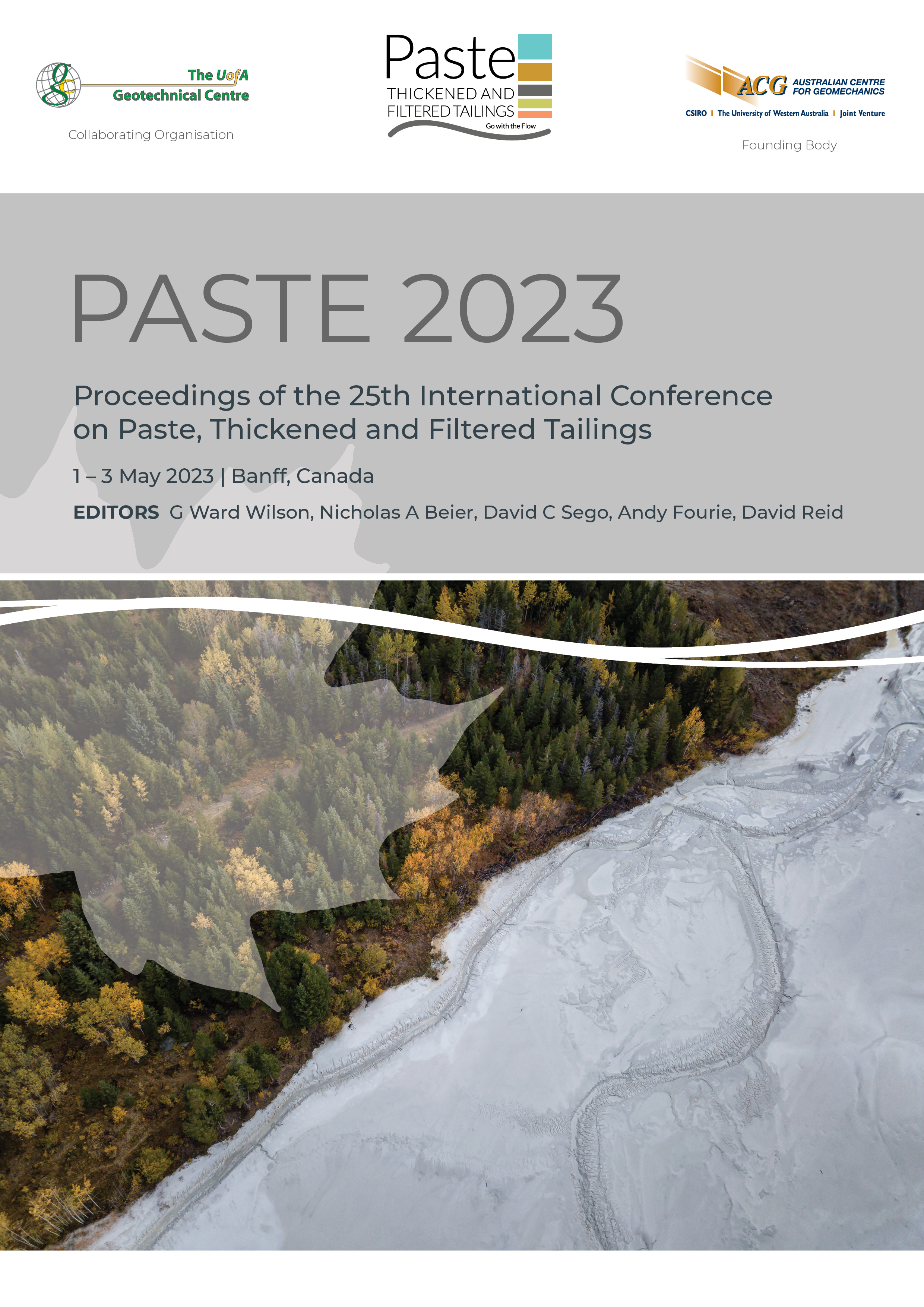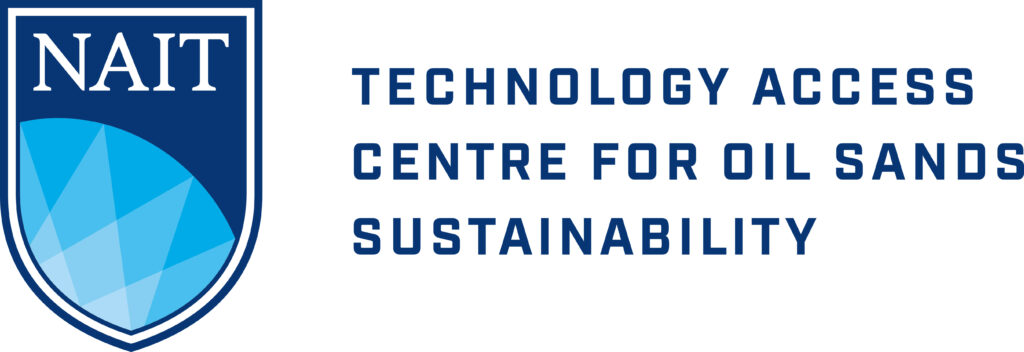Co-processing of fresh oil sand tailings and fluid fine tailings

|
Authors: Yuan, XS; Wang, N; Dunmola, A; Curran, M; Sharp, J; Lanoue, A |
DOI https://doi.org/10.36487/ACG_repo/2355_37
Cite As:
Yuan, XS, Wang, N, Dunmola, A, Curran, M, Sharp, J & Lanoue, A 2023, 'Co-processing of fresh oil sand tailings and fluid fine tailings', in GW Wilson, NA Beier, DC Sego, AB Fourie & D Reid (eds), Paste 2023: Proceedings of the 25th International Conference on Paste, Thickened and Filtered Tailings, Australian Centre for Geomechanics, Perth, pp. 495-509, https://doi.org/10.36487/ACG_repo/2355_37
Abstract:
This paper describes co-processing of fresh tailings (i.e. whole tailings), such as coarse tailings and flotation tailings from the oil sand extraction plant, and legacy fluid fine tailings (FFT) in line with a polymeric flocculant to produce paste tailings without the use of thickeners and cyclones. The objective of the project is to develop an efficient and low-cost tailings management technology to accelerate the creation of trafficable landforms that are ready for terrestrial reclamation. The idea for co-processing is that increasing the sand-to-fines ratio (SFR) will increase the hydraulic conductivity of the co-processed deposit, thus accelerating its consolidation rate. Compared to composite tailings (CT) with SFR of 3–5 and FFT centrifuge cake or flocculated FFT (fFFT) with SFR of 0–0.1, the target SFR of co-processing is 1–3 with an optimal SFR of 2. In a broader definition, the co-processing could become the treatment of whole tailings when the FFT supply is shut down or switch to the flocculated FFT process if the fresh tailings are diverted for conventional beaching operation. This paper highlights the advancements in co-processing technology development from laboratory-scale to small pilotscale. It discusses learnings from large strain consolidation (LSC) and beam centrifuge testing of the co-processed deposits to assess its long-term consolidation within the context of final reclamation and closure. Results to date show that co-processing of fresh tailings and FFT is a promising technology for achieving terrestrial closure of oil sand tailings.
Keywords: co-processing, fresh tailings, FFT, whole tailings, paste tailings, flocculant, SFR, hydraulic conductivity, LSC, beam centrifuge, terrestrial, trafficable landform, reclamation
References:
Carrier, WD, Bromwell, LG & Somogyi, F 1983, ‘Design capacity of slurried mineral waste ponds’, Journal of Geotechnical Engineering, vol. 109, no. 5, pp. 699–716.
Dang-Vu, T, Wang, N & Ramey, S 2014, ‘Treatment of oil sands coarse tailings’, Proceedings of the 17th International Seminar on Paste and Thickened Tailings, in R Jewell, AB Fourie, PS Wells, and D van Zyl (eds), InfoMine Inc, Vancouver, pp. 215–222.
Yuan, XS 2011, ‘Ore types impact on flocculation and the treatment strategies for different types of oil sand tailings’, in R Jewell
& AB Fourie (eds), Paste 2011: Proceedings of the 14th International Seminar on Paste and Thickened Tailings, Australian Centre for Geomechanics, Perth, pp. 143–153,
Yuan, XS 2019, ‘Co-processing of fresh tailings and fluid fine tailings (FFT) using paste technology’, Presentation in 2019 Oil Sands Innovation Summit, Calgary, 3–4 June 2019.
Yuan, XS & Shaw, W 2007, ‘Novel processes for treatment of Syncrude fine transition and marine ore tailings’, Canadian Metallurgical Quarterly, vol. 46, no. 3, pp. 265–272.
Yuan, XS & Siman, R 2012, Co-processing of fluid fine tailings and fresh oil sands tailings, United States Patent and Trademark Office (US Patent No US20140116956A1),
Yuan, XS & Siman, R 2017, Co-processing of fluid fine tailings and fresh oil sands tailings, Canadian Intellectual Property Office (Canadian Patent No 2,831,352),
© Copyright 2025, Australian Centre for Geomechanics (ACG), The University of Western Australia. All rights reserved.
View copyright/legal information
Please direct any queries or error reports to repository-acg@uwa.edu.au
View copyright/legal information
Please direct any queries or error reports to repository-acg@uwa.edu.au



